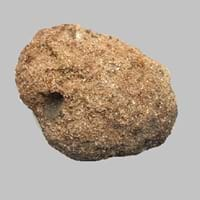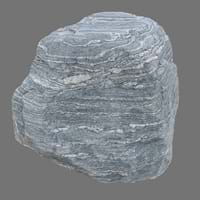Definition
A yellow sandstone which is flexible when cut into thin strips
Migmatite is typically a granitic rock within a metamorphic host rock which is composed of two intermingled but distinguishable components
Origin
Unknown
Southern Alps, France
Discoverer
Unknown
Jakob Sederholm
Etymology
From the name of a mountain range where it was found; Itacolumi mountain in Brazil
From the Greek word migma which means a mixture
Class
Sedimentary Rocks
Metamorphic Rocks
Sub-Class
Durable Rock, Hard Rock
Durable Rock, Medium Hardness Rock
Group
Not Applicable
Not Applicable
Other Categories
Coarse Grained Rock, Fine Grained Rock, Opaque Rock
Coarse Grained Rock, Fine Grained Rock, Medium Grained Rock, Opaque Rock
Texture
Clastic, Granular, Rough
Foliated
Color
Beige, Black, Brown, Colourless, Cream, Dark Brown, Green, Grey, Light Green, Light to Dark Grey, Pink, Red, White, Yellow
Black, Bluish - Grey, Brown, Brown- Black, Dark Greenish - Grey, Dark Grey to Black
Durability
Durable
Durable
Appearance
Rough
Dull, Banded and Foilated
Interior Uses
Decorative Aggregates, Floor Tiles, Homes, Interior Decoration, Kitchens
Countertops, Flooring, Kitchens
Exterior Uses
As Building Stone, As Facing Stone, Garden Decoration, Office Buildings
As Building Stone, As Facing Stone
Other Architectural Uses
Curbing
Curbing
Construction Industry
Cement Manufacture, Construction Aggregate, for Road Aggregate, Production of Glass and Ceramics, Raw material for the manufacture of mortar
As Dimension Stone, Cement Manufacture, for Road Aggregate, Making natural cement
Medical Industry
Not Yet Used
Not Yet Used
Antiquity Uses
Artifacts, Monuments, Sculpture
Artifacts
Commercial Uses
An Oil and Gas Reservoir, In aquifers, Petroleum reservoirs, Soil Conditioner, Source of Magnesia (MgO), Tombstones
Cemetery Markers, Jewelry, Tombstones, Used to manufracture paperweights and bookends
Types
Not Available
Diatexites and Metatexites
Features
Available in Lots of Colors and Patterns, Generally rough to touch, Very fine grained rock
Generally rough to touch, Is one of the oldest rock
Archaeological Significance
Monuments
Used
Not Yet Used
Famous Monuments
Data Not Available
Not Applicable
Sculpture
Used
Not Yet Used
Famous Sculptures
Data Not Available
Not Applicable
Pictographs
Not Used
Used
Petroglyphs
Not Used
Used
Figurines
Used
Not Yet Used
Formation
Itacolumite is a sedimentary rock which forms from cemented sand-sized clasts and is a type of sandstone.
Migmatites form by high temperature regional and thermal metamorphism of protolith rocks where rocks melt partially due to high temperature.
Mineral Content
Calcite, Clay, Clay Minerals, Feldspar, Micas, Quartz
Biotite, Chlorite, Feldspar, Garnet, Graphite, Hornblade, Micas, Muscovite or Illite, Quartz, Quartzite, Silica, Zircon
Compound Content
Aluminium Oxide, CaO, Iron(III) Oxide, Potassium Oxide, MgO, Sodium Oxide, Silicon Dioxide
Aluminium Oxide, NaCl, CaO, Carbon Dioxide, Iron(III) Oxide, FeO, Potassium Oxide, Magnesium Carbonate, MgO, MnO, Phosphorus Pentoxide, Silicon Dioxide, Titanium Dioxide
Types of Metamorphism
Not Applicable
Burial Metamorphism, Cataclastic Metamorphism, Regional Metamorphism
Types of Weathering
Biological Weathering, Chemical Weathering
Biological Weathering, Chemical Weathering, Mechanical Weathering
Types of Erosion
Chemical Erosion, Coastal Erosion, Wind Erosion
Chemical Erosion, Glacier Erosion, Water Erosion, Wind Erosion
Grain Size
Coarse or Fine
Medium to Fine Coarse Grained
Fracture
Conchoidal
Irregular
Porosity
Highly Porous
Very Less Porous
Luster
Dull
Dull to Pearly to Subvitreous
Compressive Strength
Not Available
Specific Gravity
2.2-2.8
2.65-2.75
Transparency
Opaque
Opaque
Density
2.2-2.8 g/cm3
Not Available
Specific Heat Capacity
Not Available
Resistance
Heat Resistant, Impact Resistant, Pressure Resistant
Heat Resistant, Pressure Resistant
Deposits in Eastern Continents
Asia
China, India, Kazakhstan, Mongolia, Russia, Uzbekistan
China, India, Iran, Iraq, Kazakhstan, Kyrgyzstan, Mongolia, Russia
Africa
Namibia, Nigeria, South Africa
Cameroon, Ethiopia, Ghana, Kenya, Madagascar, Morocco, Mozambique, Namibia, Nigeria, Tanzania, Togo
Europe
Austria, Denmark, Germany, Great Britain, Netherlands, Norway, Poland, Sweden, Switzerland, United Kingdom
Albania, Austria, Bosnia and Herzegovina, Finland, France, Georgia, Germany, Hungary, Italy, Kosovo, Monaco, Norway, Poland, Romania, Serbia, Slovakia, Slovenia, Sweden, Switzerland, Ukraine, United Kingdom
Others
Greenland
Not Yet Found
Deposits in Western Continents
North America
Canada, USA
Canada, Costa Rica, Cuba, Mexico, Panama, USA
South America
Brazil
Argentina, Bolivia, Brazil, Chile, Colombia, Ecuador, Peru, Venezuela
Deposits in Oceania Continent
Australia
New South Wales, New Zealand
New South Wales, New Zealand, Queensland, Victoria
All about Itacolumite and Migmatite Properties
Know all about Itacolumite and Migmatite properties here. All properties of rocks are important as they define the type of rock and its application. Itacolumite belongs to Sedimentary Rocks while Migmatite belongs to Metamorphic Rocks.Texture of Itacolumite is Clastic, Granular, Rough whereas that of Migmatite is Foliated. Itacolumite appears Rough and Migmatite appears Dull, Banded and Foilated. The luster of Itacolumite is dull while that of Migmatite is dull to pearly to subvitreous. Itacolumite is available in beige, black, brown, colourless, cream, dark brown, green, grey, light green, light to dark grey, pink, red, white, yellow colors whereas Migmatite is available in black, bluish - grey, brown, brown- black, dark greenish - grey, dark grey to black colors. The commercial uses of Itacolumite are an oil and gas reservoir, in aquifers, petroleum reservoirs, soil conditioner, source of magnesia (mgo), tombstones and that of Migmatite are cemetery markers, jewelry, tombstones, used to manufracture paperweights and bookends.









